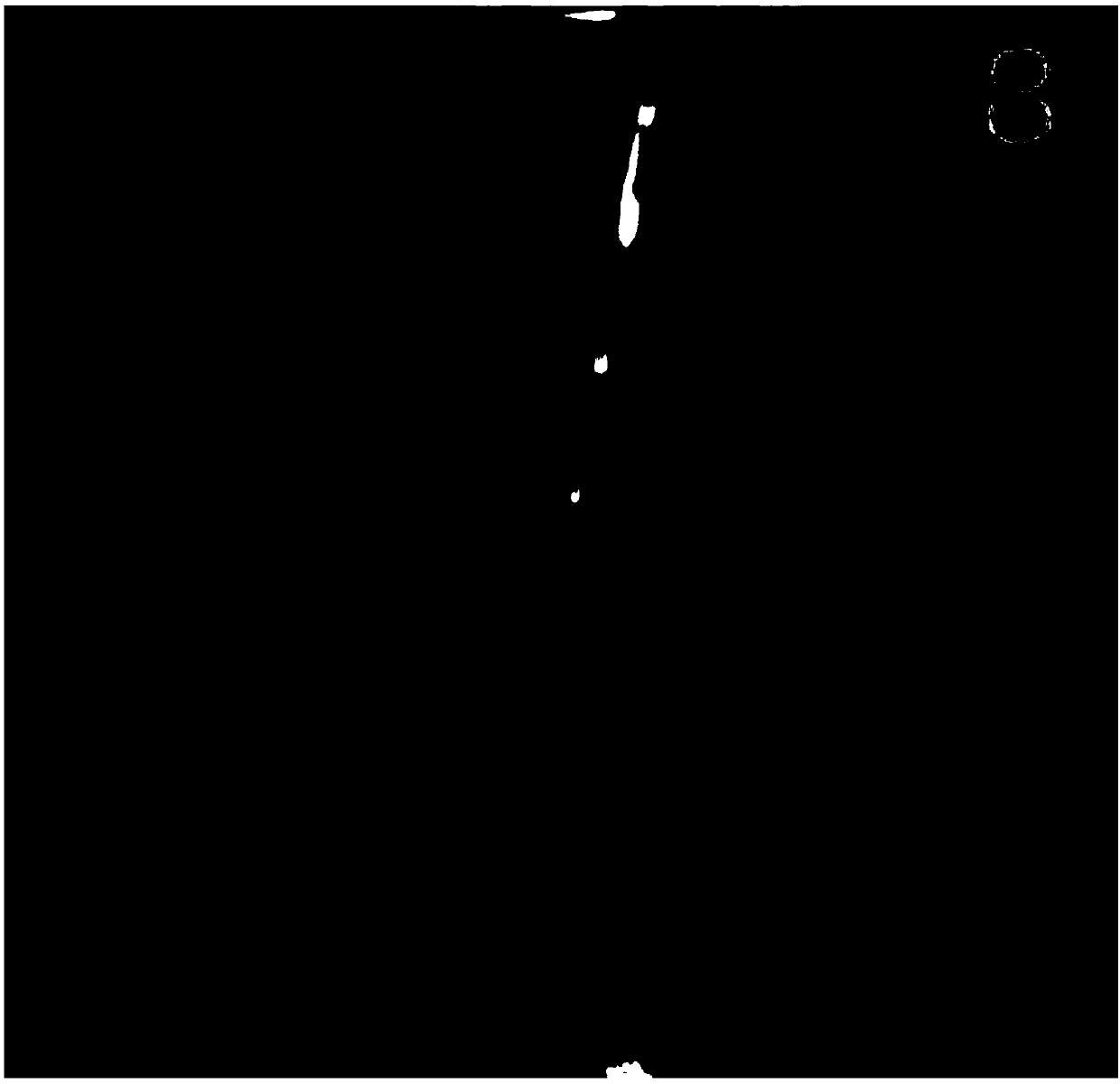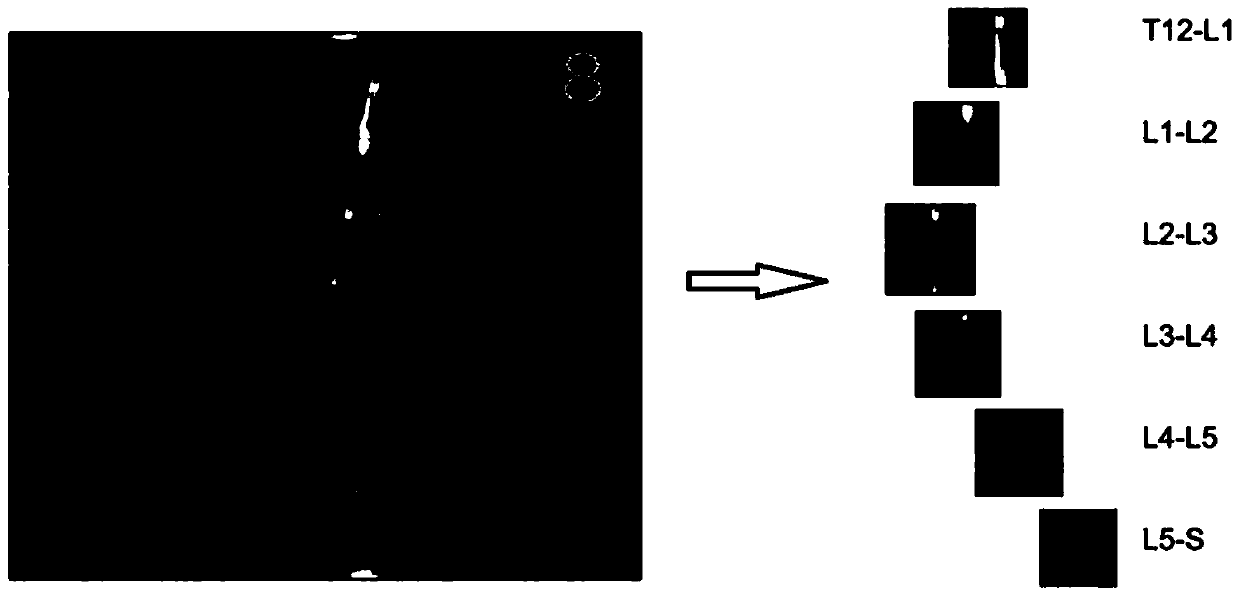Artificial intelligence diagnosis and classification system for lumbar disc herniation
A technology of lumbar intervertebral disc herniation and artificial intelligence, which is applied in the fields of diagnosis, diagnostic recording/measurement, medical science, etc., can solve problems such as low efficiency, uneven medical staff, and heavy burden on doctors, so as to reduce the difference in diagnosis and treatment level, The effect of high accuracy of interpretation and improvement of diagnosis and treatment efficiency
- Summary
- Abstract
- Description
- Claims
- Application Information
AI Technical Summary
Problems solved by technology
Method used
Image
Examples
Embodiment 1
[0046] In the present embodiment, a plurality of sagittal lumbar images (such as Figure 1a shown), in preparation for lumbar lesion labeling.
[0047] Preferably, the marking module includes an interdisc image acquisition module and a lesion marking module.
[0048] The disc image acquisition module identifies multiple discs in each of the multiple lumbar images and captures multiple disc images centering on each disc. Such as Figure 1b and 1cAs shown, due to the large inclination angle and special shape of the sacrum, the sacrum is listed as a first-class bone, and other bones with similar shapes from the sacrum are listed as a first-class bone. In each of the images, the sacrum starts from the sacrum and identifies multiple lumbar vertebrae bones in turn, which are marked as bone S, bone L5, bone L4, bone L3, bone L2, bone L1, and bone T12; further identify the adjacent lumbar bones. Discs, namely, disc L5-S, disc L4-L5, disc L3-L4, disc L2-L3, disc L1-L2, disc T12-L1. ...
Embodiment 2
[0054] Pfirrmann lumbar disc herniation MRI grading is an intuitive grade of degeneration, which is often used as a standard to measure the severity of intervertebral disc herniation and as a basis for judging different treatment options. Combine below Figure 1a , 2a and 2b illustrate in detail the implementation of Pfirrmann classification on lumbar images using the lumbar intervertebral disc diagnosis and classification system proposed by the present invention.
[0055] In the present embodiment, a plurality of sagittal lumbar images (such as Figure 1a shown), in preparation for the Pfirrmann classification.
[0056] Preferably, the marking module includes an interdisc image acquisition module and a lesion marking module.
[0057] The disc image acquisition module identifies multiple discs in each of the multiple lumbar images and captures multiple disc images centering on each disc. Such as Figure 2a As shown, due to the large inclination angle and special shape of th...
Embodiment 3
[0064] MSU classification is a method to classify the degree of lesions shown in the cross-sectional images of the lumbar spine, which can guide medical staff to choose a treatment plan and make patient selection objective. Combine below Figure 3a with 3b The specific application of the artificial intelligence lumbar disc herniation diagnosis and classification system proposed in the present invention in MSU classification will be further described.
[0065] The data acquisition module receives a plurality of lumbar spine cross-sectional images (for example, Figure 3a The cross-sectional images of the lumbar spine shown in ) were used as the training basis for the neural network classifier.
[0066] In this embodiment, the marking module includes a bone window image acquisition module and a lesion marking module.
[0067] Since MSU classification is mainly based on the position of intervertebral disc herniation, it is necessary to identify the key bone window to remove th...
PUM
 Login to View More
Login to View More Abstract
Description
Claims
Application Information
 Login to View More
Login to View More - R&D
- Intellectual Property
- Life Sciences
- Materials
- Tech Scout
- Unparalleled Data Quality
- Higher Quality Content
- 60% Fewer Hallucinations
Browse by: Latest US Patents, China's latest patents, Technical Efficacy Thesaurus, Application Domain, Technology Topic, Popular Technical Reports.
© 2025 PatSnap. All rights reserved.Legal|Privacy policy|Modern Slavery Act Transparency Statement|Sitemap|About US| Contact US: help@patsnap.com



